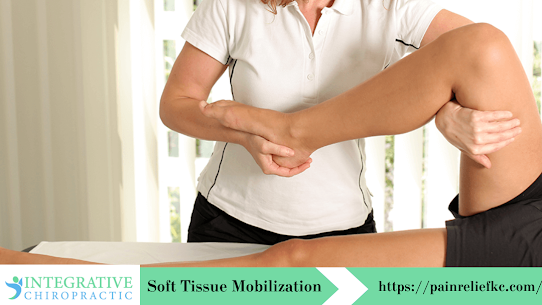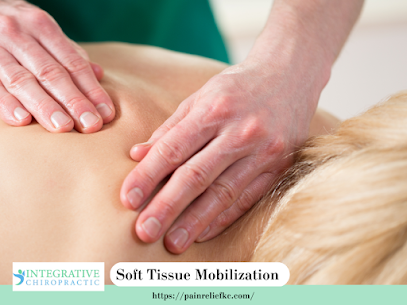Do you suffer from chronic pain that seems to never go away? Have you tried every possible solution but found no relief? Soft Tissue Mobilization might just be the ultimate pain solution that you have been looking for. It is a form of therapy that targets the soft tissues in our body, including muscles, tendons, and ligaments. In this blog, we will explore what soft tissue mobilization is and the science behind it. We will delve into how it can help alleviate pain and who can benefit from it. We will also take a closer look at different types of techniques used in soft tissue mobilization therapy sessions and what you can expect during a session. So, if you are tired of living withpain and want to find a long-lasting solution, read on to discover if soft tissue mobilization is right for you.
Understanding Soft Tissue Mobilization
Soft tissue mobilization involves the manipulation of muscles, tendons, and ligaments. The aim is to improve range of motion, reduce inflammation, and promote healing. It is commonly used in physical therapy and chiropractic care to target specific areas of the body and address musculoskeletal dysfunction. This hands-on treatment method helps alleviate pain and discomfort.

The Science Behind Soft Tissue Mobilization
Soft tissue mobilization increases blood flow and circulation, reducing swelling and stiffness. Manual therapy techniques release muscle tension and tightness, promoting proper motion and alignment for healing. Gentle pressure and rhythmic stretching also provide relaxation and pain relief. Overland Park, Kansas City’s solution to muscular pain, offers effective soft tissue therapy in conjunction with spinal manipulation to address a patient’s pain.
The Role of Soft Tissue Mobilization in Pain Management
Soft tissue mobilization is an effective approach for managing chronic pain. By targeting the root cause of pain and addressing musculoskeletal dysfunction, this therapy technique can alleviate pain from conditions like arthritis, back pain, headaches, muscle spasms,plantar fasciitis, and joint inflammation. Incorporating soft tissue therapy in conjunction with other treatments can provide relief for patients suffering from various types of pain.
How Soft Tissue Mobilization Alleviates Pain
Soft tissue mobilization is a therapy technique that effectively alleviates pain by reducing muscle tension and releasing tight muscles. It improves joint mobility, increases range of motion, and decreases swelling and inflammation. By promoting proper alignment and relieving pressure on nerves, soft tissue mobilization targets specific areas to enhance overall function and provide relief to patients.

Who Can Benefit from Soft Tissue Mobilization?
- Athletes with sports-related injuries can benefit from soft tissue mobilization.
- Individuals experiencing musculoskeletal pain and dysfunction can find relief through this therapy.
- Those with limited range of motion and stiffness can improve their flexibility with soft tissue mobilization.
- People suffering from chronic pain conditions like arthritis or fibromyalgia may experience pain reduction.
- Soft tissue mobilization techniques can be customized to address specific needs and conditions.
Examples of Conditions Treated with Soft Tissue Mobilization
Soft tissue mobilization in Overland Park, Kansas City, is an effective therapy technique that addresses various conditions. It helps alleviate back pain, neck pain, shoulder pain, and rotator cuff injuries. Additionally, it provides relief for tendonitis, bursitis, carpal tunnel syndrome, tennis elbow, sciatica, and muscle strains. This therapy, in conjunction with spinal manipulation and other soft tissue therapies, targets the patient’s pain and improves overall function.
Types of Soft Tissue Mobilization Techniques
Soft tissue mobilization encompasses various techniques for addressing muscular pain and dysfunction. These techniques include deep tissue massage, instrument-assisted soft tissue mobilization (IASTM) with tools like Graston instruments, myofascial release for improved mobility and pain reduction, joint mobilization for better alignment and function, and contract-relax stretching. Each technique offers unique benefits and can be tailored to meet the individual needs of patients.
A Closer Look at Different Soft Tissue Mobilization Methods
Deep tissue massage applies firm pressure to release tension in the deep layers of muscles. Instrument-assisted soft tissue mobilization involves utilizing specialized tools to detect and treat adhesions and scar tissue. Myofascial release targets the fascia, the connective tissue surrounding muscles. Joint mobilization uses specific techniques to improve joint alignment and restore proper motion. Contract-relax stretching targets tight muscles by contracting and then stretching them.

What to Expect in a Soft Tissue Mobilization Therapy Session?
During a soft tissue mobilization therapy session, your therapist will assess your specific needs and use techniques tailored to your condition. With gentle pressure and specific movements, they will target areas of pain and dysfunction. You may experience some soreness or discomfort during or after the session.
Is Soft Tissue Mobilization Painful?
Soft tissue mobilization is generally not painful, although you may feel some discomfort. Therapists will adjust the pressure and technique based on your tolerance to ensure a positive treatment experience. Remember to communicate any discomfort with your therapist for a customized approach.
How Can You Tell if Soft Tissue Mobilization is Right for You?
Determining if soft tissue mobilization is suitable for you involves evaluating your range of motion, considering chronic pain relief options, consulting with a therapist, assessing musculoskeletal dysfunction, and identifying conditions that could benefit from this hands-on technique.
Conclusion
Soft tissue mobilization is a powerful pain management technique that targets the root cause of pain. By addressing the underlying soft tissue restrictions and imbalances, this therapy can provide long-term relief and improve overall function. Whether you’re suffering from chronic pain, sports injuries, or post-surgical discomfort, soft tissue mobilization can be beneficial for your recovery. It’s a non-invasive and drug-free approach that focuses on restoring mobility, reducing inflammation, and promoting healing. If you’re tired of living with pain and looking for a holistic solution, consider trying soft tissue mobilization. Consult with a qualified therapist to determine if this therapy is right for you and take the first step towards a pain-free life.

